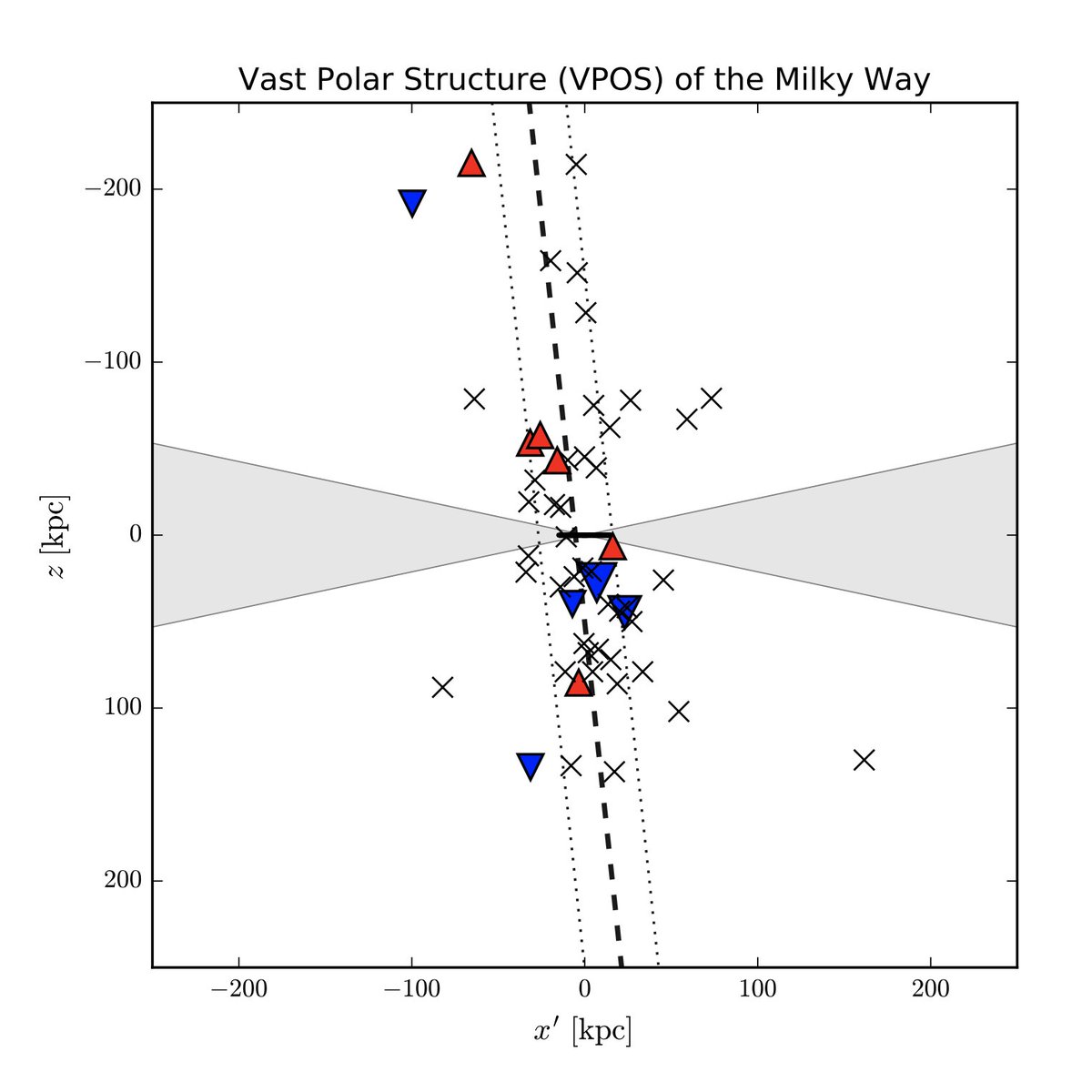
Astrophysicist – Research Group Leader @AIP_Potsdam. Mein Buch "Von tanzenden Galaxien, Dunkler Materie und anderen kosmischen Rätseln" erscheint am 19.11.2024
How to get URL link on X (Twitter) App

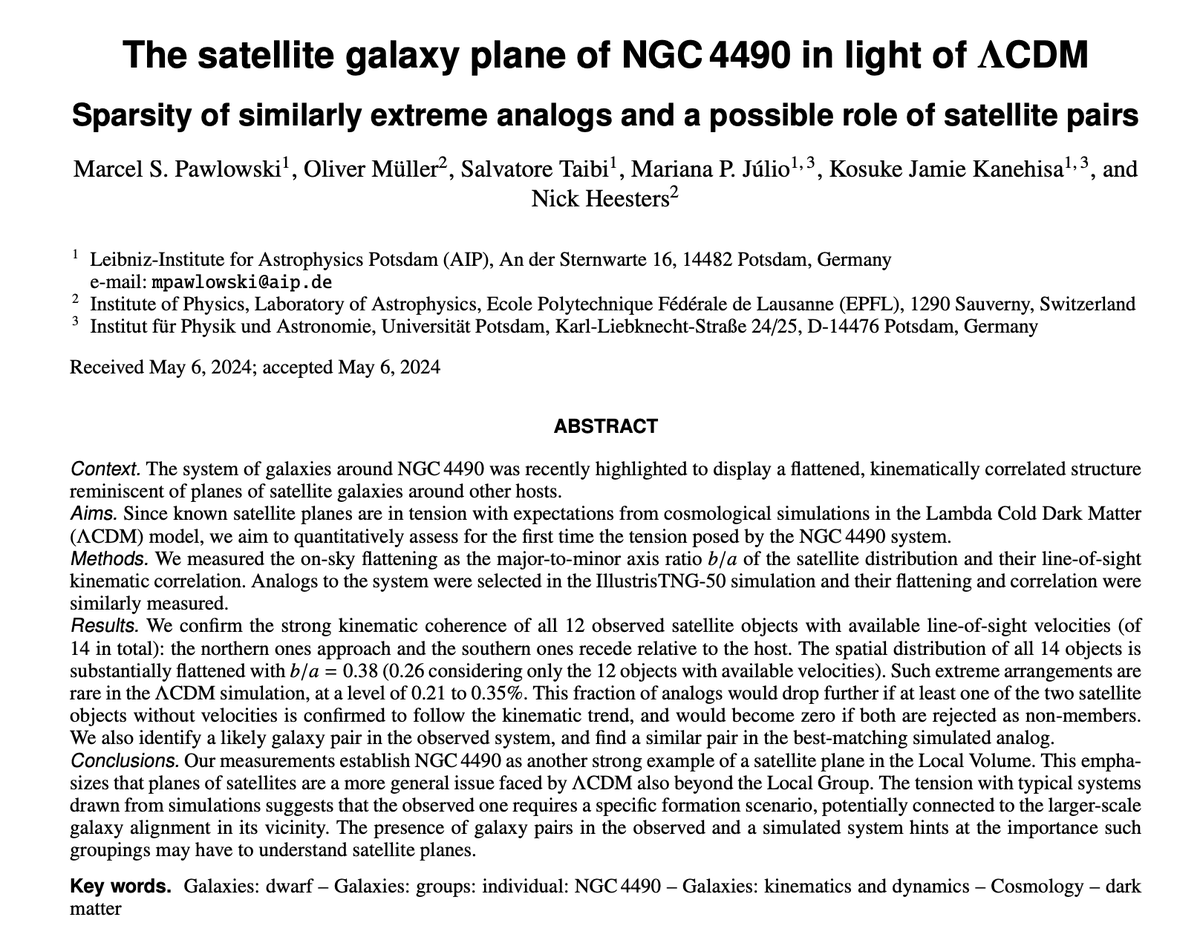
 Background: There are three well-studied cases of planes of satellite galaxies, i.e. flattened arrangements of satellite galaxies that show coherent dynamics reminiscent of rotation: Milky Way, Andromeda, and Centaurus A. Each of these is in tension with ΛCDM expectations.
Background: There are three well-studied cases of planes of satellite galaxies, i.e. flattened arrangements of satellite galaxies that show coherent dynamics reminiscent of rotation: Milky Way, Andromeda, and Centaurus A. Each of these is in tension with ΛCDM expectations. 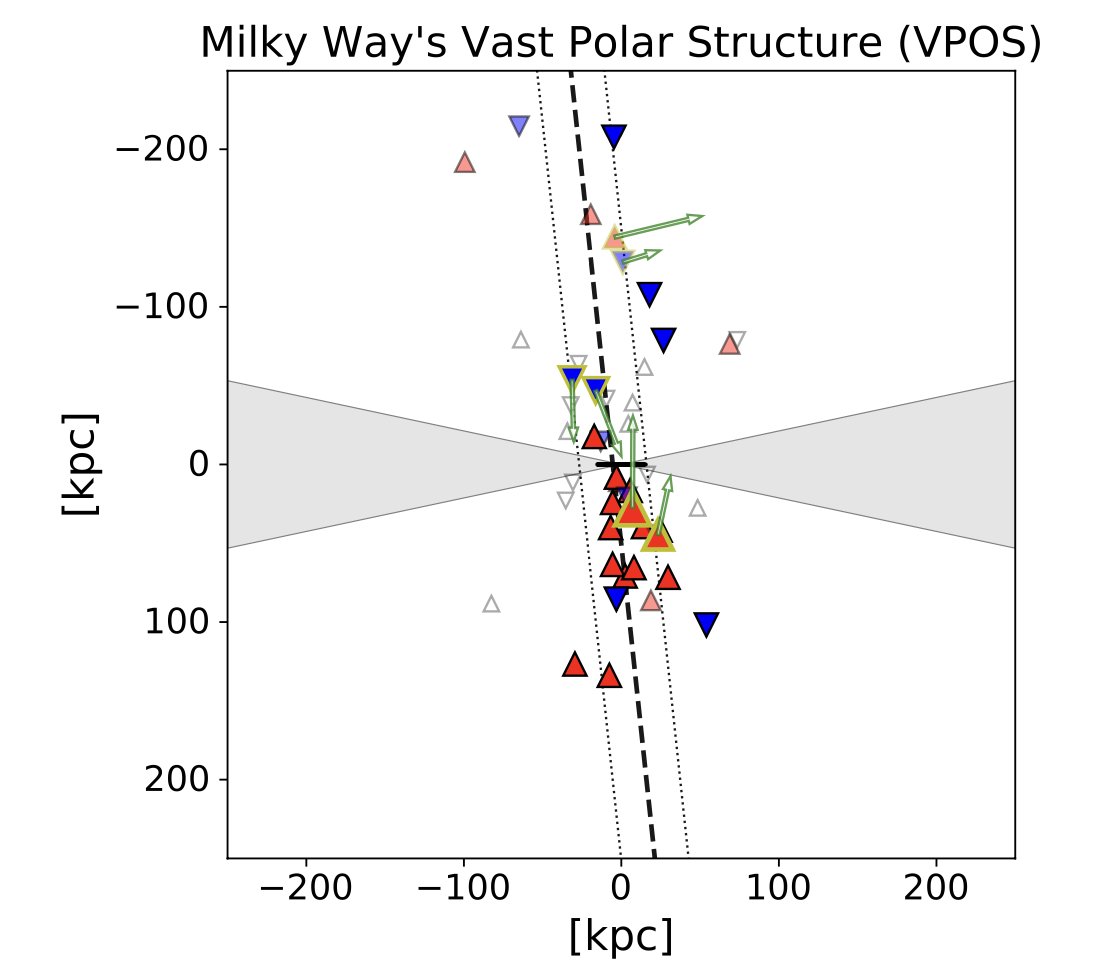




 MATLAS () is a deep imaging survey targeting massive galaxies beyond the Local Volume. matlas.astro.unistra.fr/WP/
MATLAS () is a deep imaging survey targeting massive galaxies beyond the Local Volume. matlas.astro.unistra.fr/WP/
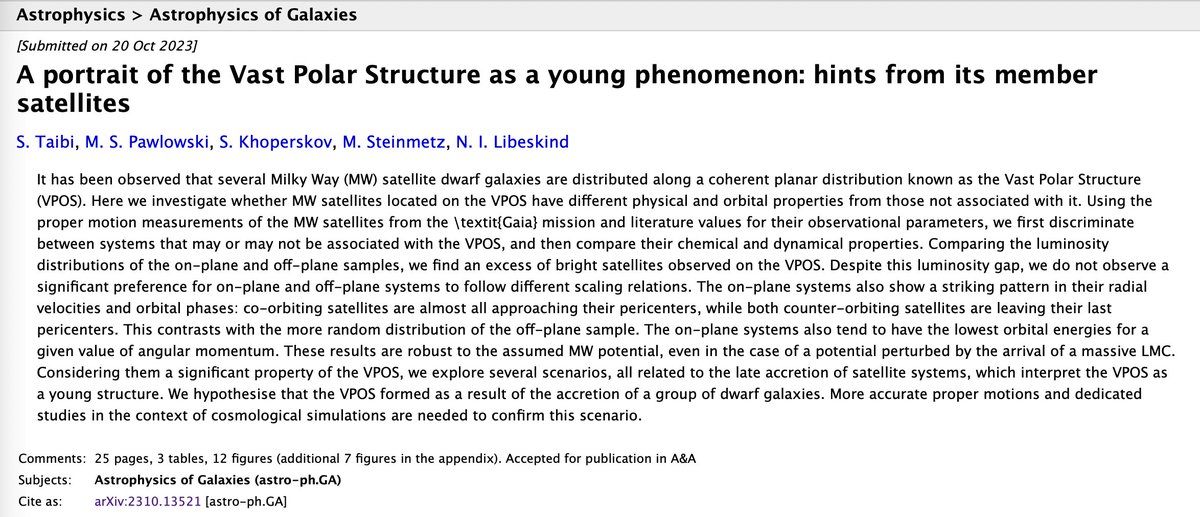
 There are many papers looking at the planes of satellite galaxies problem via cosmological simulations. This approach is of limited utility to learn about the origin of the observed sat. planes. We instead focus on empirically investigating the MW’s satellite plane, the VPOS.
There are many papers looking at the planes of satellite galaxies problem via cosmological simulations. This approach is of limited utility to learn about the origin of the observed sat. planes. We instead focus on empirically investigating the MW’s satellite plane, the VPOS.

 Planes of satellites are spatially flattened arrangements with coherent kinematics; potentially co-rotating. The latter seems the case for many of the 11 classical MW satellite galaxies. To measure tension with LCDM, one looks for similarly extreme structures in simulated systems
Planes of satellites are spatially flattened arrangements with coherent kinematics; potentially co-rotating. The latter seems the case for many of the 11 classical MW satellite galaxies. To measure tension with LCDM, one looks for similarly extreme structures in simulated systems
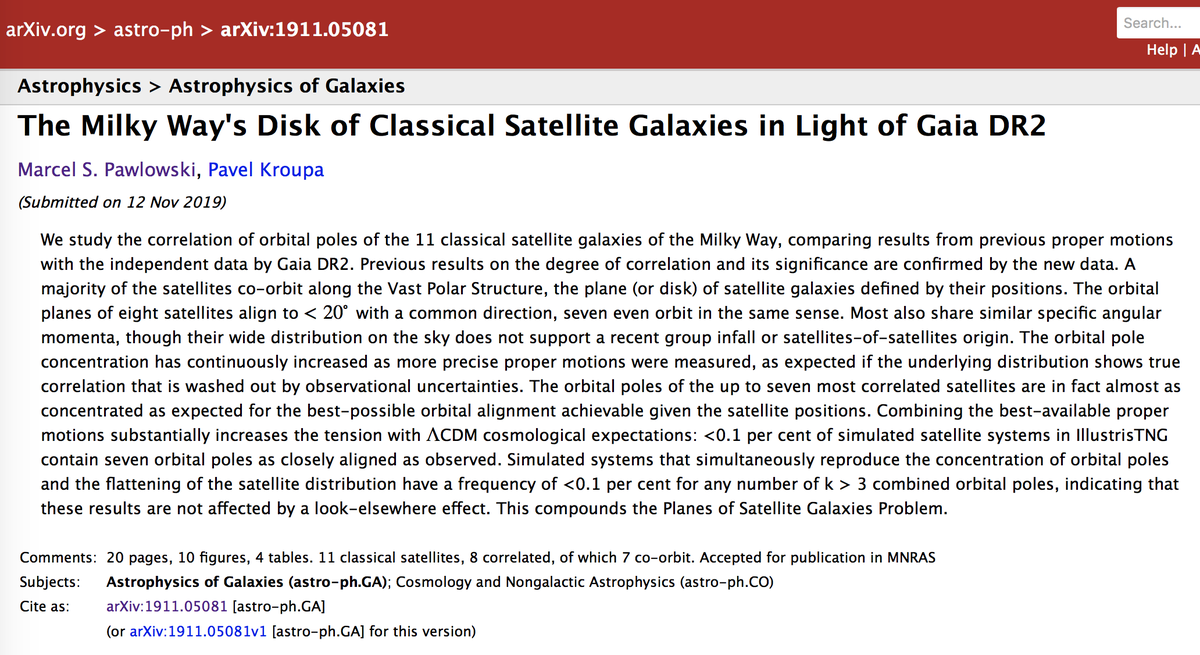
 We know since Lynden-Bell (1976) and Kunkel & Demers (1976) that the distribution of known Milky Way satellite galaxies, especially the 11 brightest ones, is highly flattened. They form a disk/plane perpendicular to the MW.
We know since Lynden-Bell (1976) and Kunkel & Demers (1976) that the distribution of known Milky Way satellite galaxies, especially the 11 brightest ones, is highly flattened. They form a disk/plane perpendicular to the MW. 




 The Magellanic Stream is a gas structure emanating from the Magellanic Clouds that stretches over 150º across the south of the Milky Way, behind the Clouds. In front there's a gaseous feature called the Leading Arm - usually thought to be the Stream's counterpart running ahead.
The Magellanic Stream is a gas structure emanating from the Magellanic Clouds that stretches over 150º across the south of the Milky Way, behind the Clouds. In front there's a gaseous feature called the Leading Arm - usually thought to be the Stream's counterpart running ahead. 
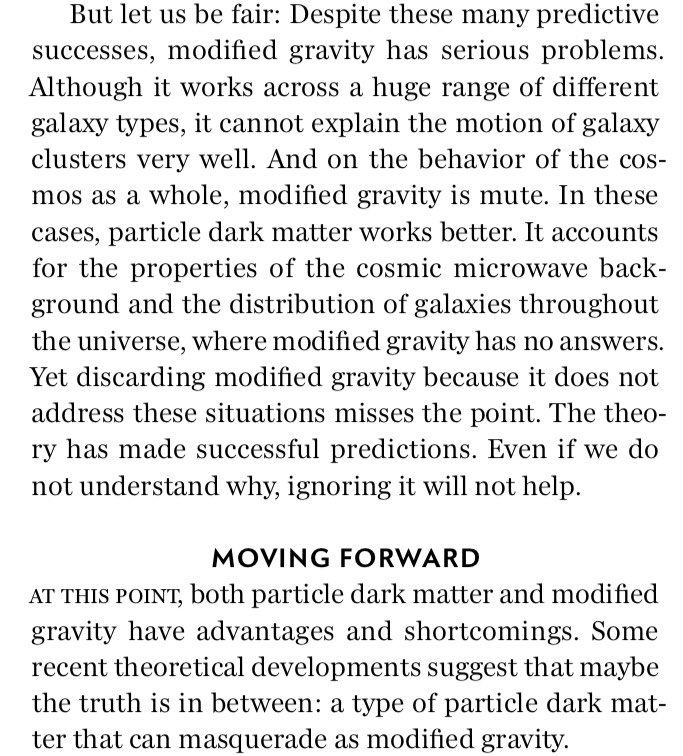
https://twitter.com/DudeDarkmatter/status/1022803635862949888None of these approaches is without issues, but we all tend to weight different lines of evidence differently. Thing is, if you don’t know much about MOND, it is easily dismissed. But that’s a quite subjective reason.
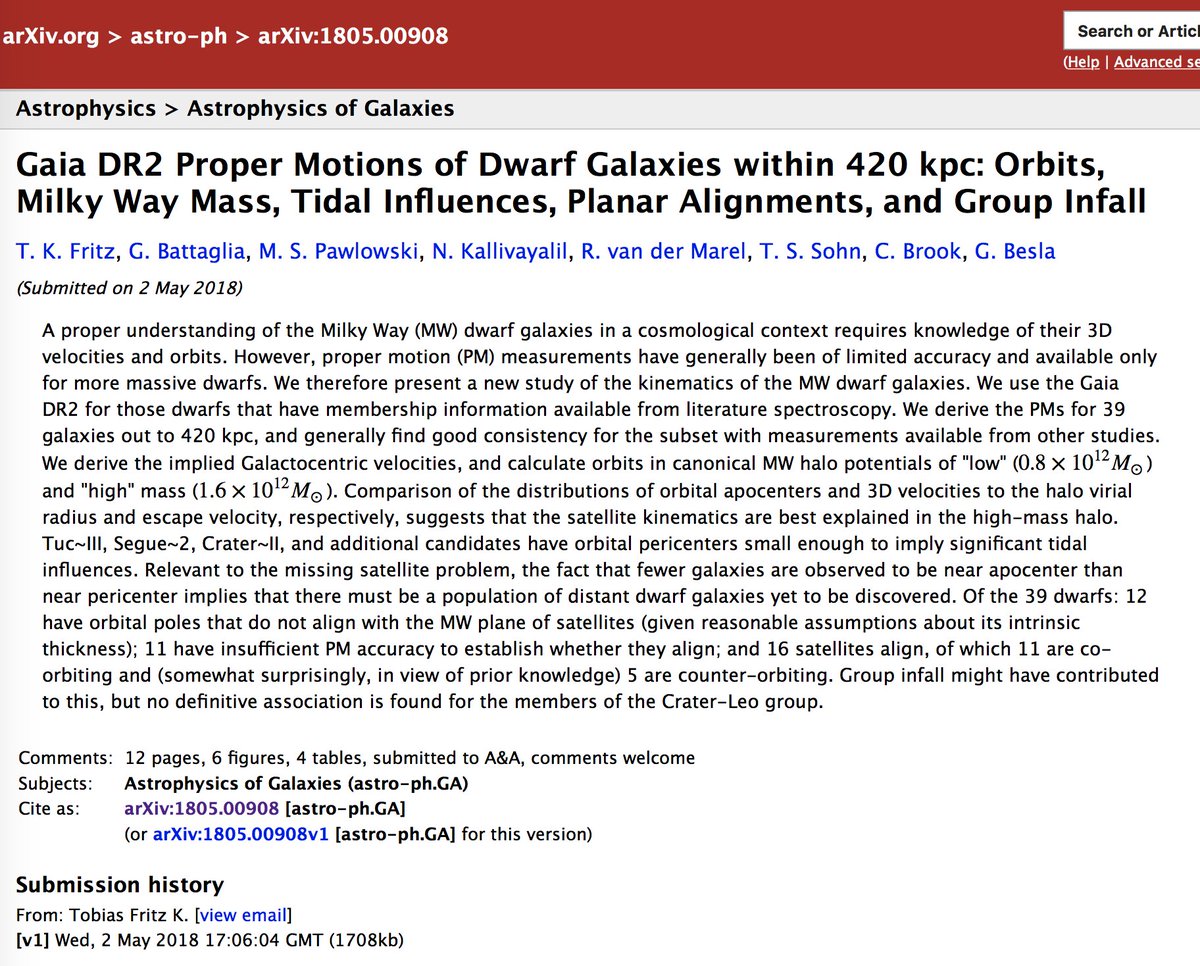
 The title already kind of says it all: "Gaia DR2 Proper Motions of Dwarf Galaxies within 420 kpc: Orbits, Milky Way Mass, Tidal Influences, Planar Alignments, and Group Infall".
The title already kind of says it all: "Gaia DR2 Proper Motions of Dwarf Galaxies within 420 kpc: Orbits, Milky Way Mass, Tidal Influences, Planar Alignments, and Group Infall".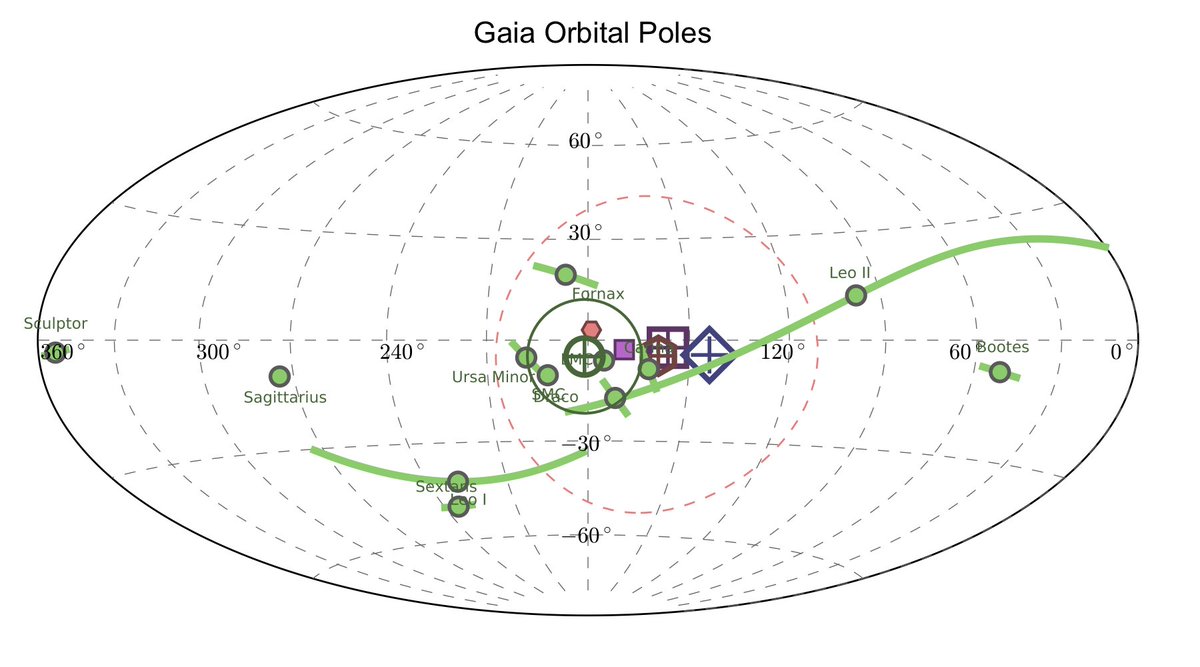


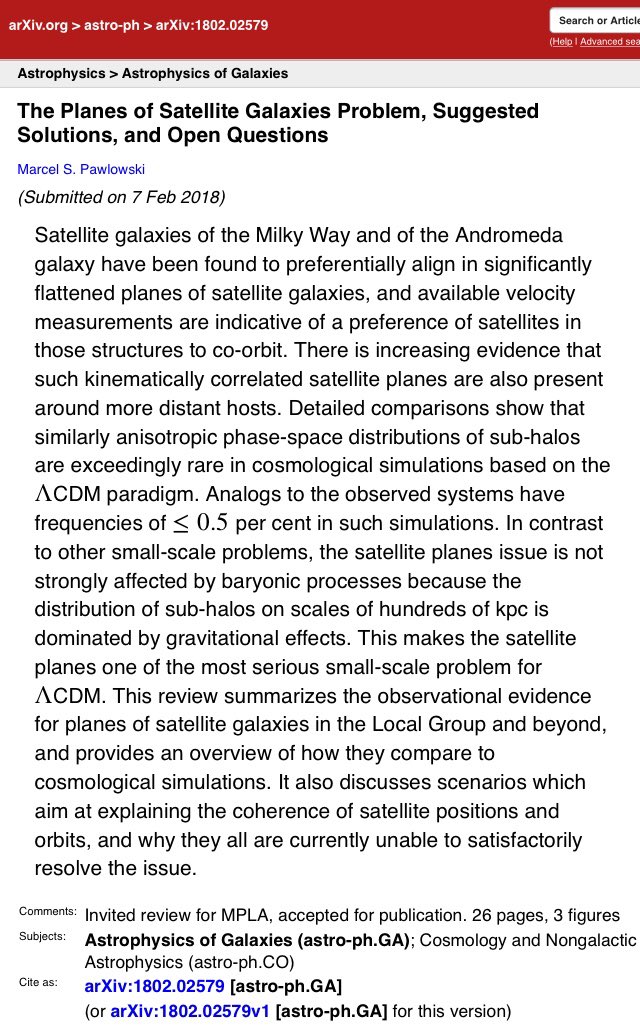 Some time ago I was invited by MPLA to write a brief review on the Planes of Satellite Galaxies issue. Since there wasn't any review on the topic out there yet, and because people had been asking me frequently for a good introduction to the topic, I happily accepted.
Some time ago I was invited by MPLA to write a brief review on the Planes of Satellite Galaxies issue. Since there wasn't any review on the topic out there yet, and because people had been asking me frequently for a good introduction to the topic, I happily accepted.
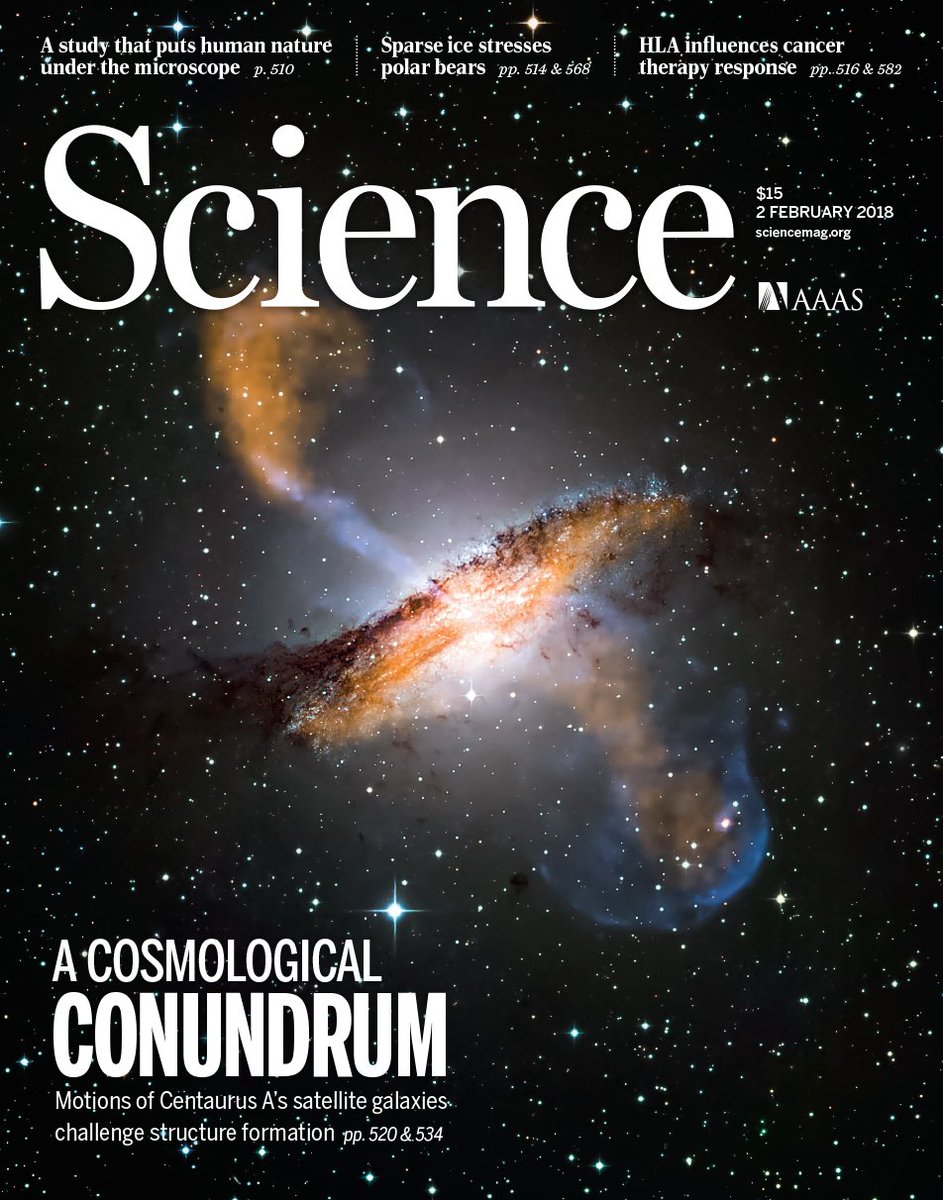 Satellite Galaxies Planes exist around the Milky Way and M31. The satellite galaxies show coherence in their velocities (red receding, blue approaching in these views). For the MW, proper motions even show that some co-orbit along the plane.
Satellite Galaxies Planes exist around the Milky Way and M31. The satellite galaxies show coherence in their velocities (red receding, blue approaching in these views). For the MW, proper motions even show that some co-orbit along the plane. 